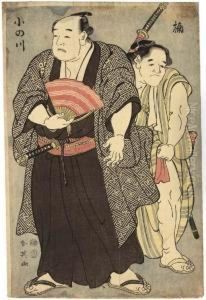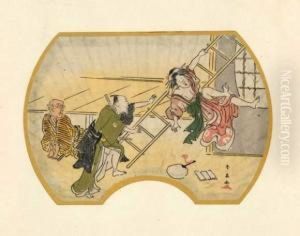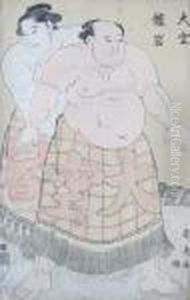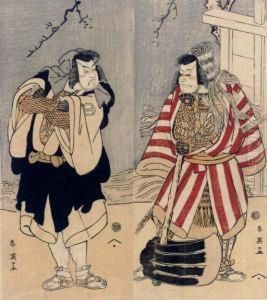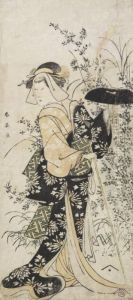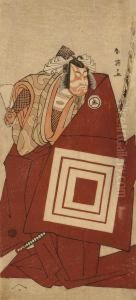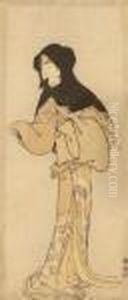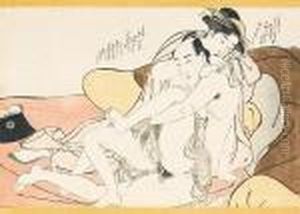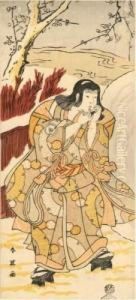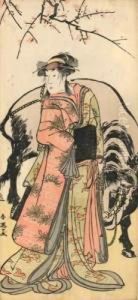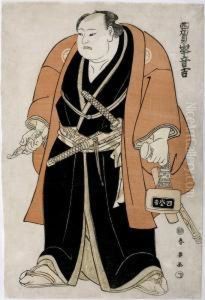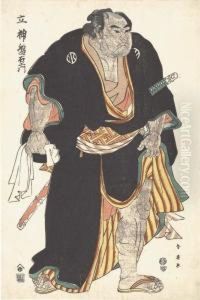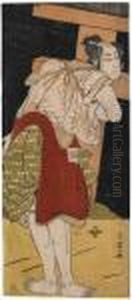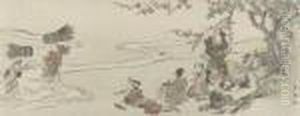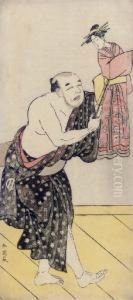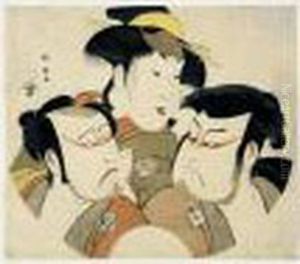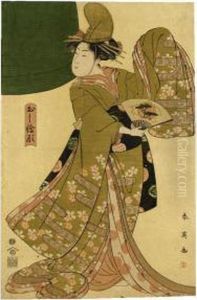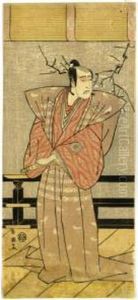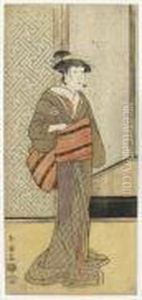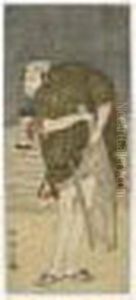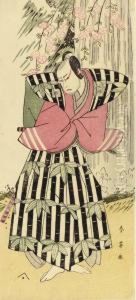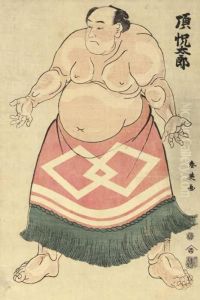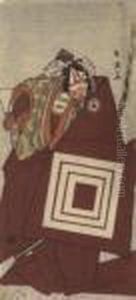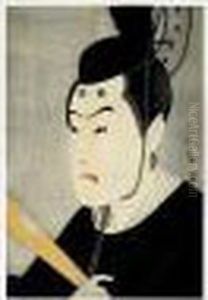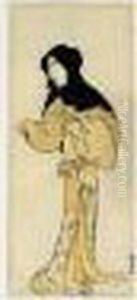Katsukawa Shunei Paintings
Katsukawa Shunei was a Japanese ukiyo-e artist, known for his woodblock prints and paintings. He was part of the Katsukawa school, which was famous for its depictions of kabuki actors, sumo wrestlers, and other subjects related to the popular entertainment of the Edo period. Born in 1762, Shunei became a pupil of Katsukawa Shunsho, one of the leading ukiyo-e masters of the time. Under Shunsho's guidance, Shunei honed his skills and eventually became known for his own distinctive style.
Shunei’s work is characterized by the use of vivid colors and dynamic compositions. He often portrayed the theatrical world of kabuki, capturing the dramatic expressions and poses of the actors. His prints are also notable for their detailed rendering of clothing patterns and textures, reflecting the contemporary fashion of the Edo period. Shunei contributed to the development of the 'mitsu-obi' style of portraying actors, which involved showing them with a three-part obi belt, a style that became a hallmark of the Katsukawa school.
Outside of his work focused on the kabuki theatre, Shunei also created prints of sumo wrestlers, which were popular among the Edo populace. These works not only captured the physicality of the wrestlers but also the atmosphere and excitement of sumo tournaments. His contributions to this genre of ukiyo-e helped solidify the visual culture surrounding sumo during this period.
Unfortunately, compared to some of his contemporaries, less is known about Shunei’s personal life, and he did not achieve the same level of fame as artists like Katsushika Hokusai or Utagawa Hiroshige. Nevertheless, his works remain an important part of the ukiyo-e tradition, offering insight into the cultural life of Japan during the late 18th and early 19th centuries. Shunei continued to produce art throughout his life until his death in 1819. His legacy is preserved in collections around the world, where his prints continue to be studied and appreciated for their historical and artistic value.
